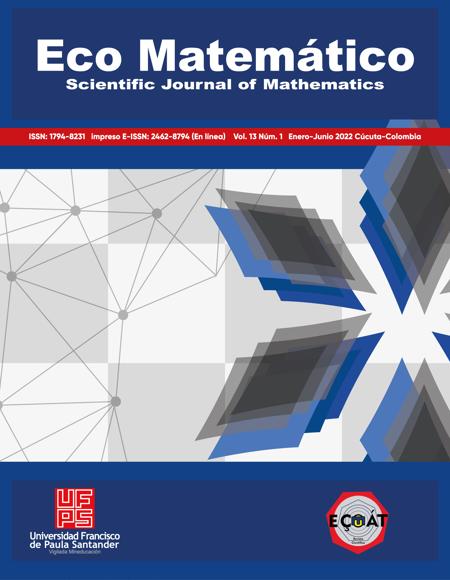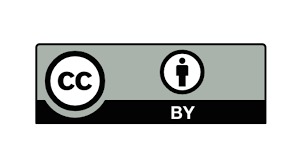Identificación preliminar de lesiones cutáneas mediante técnicas de aprendizaje computacional eficientes
Preliminary Identification of Skin Lesions using Efficient Computational Learning Techniques
Contenido principal del artículo
El aprendizaje automático (ML) es uno de los campos de la inteligencia artificial que ofrece
algoritmos para predecir a partir de muestras la detección efectiva de lesiones cutáneas causadas por el
cáncer de piel. En este trabajo se presenta la identificación preliminar de lesiones cutáneas utilizando
algoritmos optimizados para la extracción de características de textura mediante GLCM y aprendizaje
basado en características (LightGBM, SVM y HAAR Cascade) como etapa inicial para una herramienta de
diagnóstico. El conjunto de imágenes de lesiones cutáneas HAM10000, el lenguaje de programación
Python y las bibliotecas basadas en código abierto se utilizan para procesar las imágenes, extraer las
características y entrenar los modelos de aprendizaje, determinar el rendimiento y la tasa de aciertos de los
modelos. Según los resultados obtenidos, el clasificador LightGBM fue el que requirió el menor tiempo de
aprendizaje, un uso reducido de la CPU y una tasa de acierto del 90 %.
Descargas
Detalles del artículo
E. R. Parker, “The influence of climate change on skin cancer incidence – A review
of the evidence,” Int. J. Women’s Dermatology, vol. 7, no. 1, pp. 17–27, Jan. 2021,
doi: 10.1016/J.IJWD.2020.07.003. DOI: https://doi.org/10.1016/j.ijwd.2020.07.003
C. Magalhaes, J. M. R. S. Tavares, J. Mendes, and R. Vardasca, “Comparison of
machine learning strategies for infrared thermography of skin cancer,” Biomed.
Signal Process. Control, vol. 69, pp. 1–10, Aug. 2021, doi: DOI: https://doi.org/10.1109/TSP.2021.3136798
1016/j.bspc.2021.102872.
T. G. Chandra, A. M. T. Nasution, and I. C. Setiadi, “Melanoma and nevus
classification based on asymmetry, border, color, and GLCM texture parameters
using deep learning algorithm,” in AIP Conference Proceedings, Dec. 2019, vol.
, no. 1, pp. 1–6, doi: 10.1063/1.5139389. DOI: https://doi.org/10.1063/1.5139389
S. A. A. Ahmed, B. Yanikoglu, O. Goksu, and E. Aptoula, “Skin Lesion
Classification with Deep CNN Ensembles,” 2020 28th Signal Process. Commun.
Appl. Conf. SIU 2020 - Proc., Oct. 2020, doi: 10.1109/SIU49456.2020.9302125. DOI: https://doi.org/10.1109/SIU49456.2020.9302125
E. Almansour and M. Arfan Jaffar, “Classification of Dermoscopic Skin Cancer
Images Using Color and Hybrid Texture Features,” IJCSNS Int. J. Comput. Sci.
Netw. Secur., vol. 16, no. 4, 2016.
S. Afifi, H. Gholamhosseini, and R. Sinha, “SVM classifier on chip for melanoma
detection,” Proc. Annu. Int. Conf. IEEE Eng. Med. Biol. Soc. EMBS, pp. 270–274,
Sep. 2017, doi: 10.1109/EMBC.2017.8036814. DOI: https://doi.org/10.1109/EMBC.2017.8036814
X. Li, J. Wu, H. Jiang, E. Z. Chen, X. Dong, and R. Rong, “Skin Lesion
Classification Via Combining Deep Learning Features and Clinical Criteria
Representations,” bioRxiv, pp. 1–7, Aug. 2018, doi: 10.1101/382010. DOI: https://doi.org/10.1101/382010
K. Padmavathi and K. Thangadurai, “Implementation of RGB and Grayscale
Images in Plant Leaves Disease Detection – Comparative Study,” Indian J. Sci.
Technol., vol. 9, no. 6, pp. 1–6, Feb. 2016, doi: 10.17485/IJST/2016/V9I6/77739. DOI: https://doi.org/10.17485/ijst/2016/v9i6/77739
M. Kumar, M. Alshehri, R. AlGhamdi, P. Sharma, and V. Deep, “A DE-ANN
Inspired Skin Cancer Detection Approach Using Fuzzy C-Means Clustering,”
Mob. Networks Appl. 2020 254, vol. 25, no. 4, pp. 1319–1329, Jun. 2020, doi: DOI: https://doi.org/10.1007/s11036-020-01550-2
1007/S11036-020-01550-2.
A. M. Gajbar and A. . Deshpande, “GLCM and Multiclass Support Vector
Machine Based Automatic Detection and Analysis of Types of Cancer and Skin
Allergy,” Int. J. Adv. Res. Electron. Commun. Eng., vol. 4, no. 5, pp. 1477–1488,
J. Díaz Ríos, J. J. Payá Martínez, and M. E. Del Baño Aldedo, “El análisis textural
mediante las matrices de co-ocurrencia (GLCM) sobre la imagen ecográfica del
tendón rotuliano es de utilidad para la detección de cambios histológicos tras un
entrenamiento con plataforma de vibración,” Cult. Cienc. y Deport., vol. 4, no. 11,
pp. 91–102, 2009, Accessed: Jan. 20, 2022. [Online]. Available:
https://dialnet.unirioja.es/servlet/articulo?codigo=3097046&info=resumen&idio
ma=ENG.
J. Zhang, D. Mucs, U. Norinder, and F. Svensson, “LightGBM: An Effective and
Scalable Algorithm for Prediction of Chemical Toxicity-Application to the Tox21
and Mutagenicity Data Sets,” J. Chem. Inf. Model., pp. 1–9, 2019, doi:
1021/ACS.JCIM.9B00633/SUPPL_FILE/CI9B00633_SI_001.PDF.
C. Chen, Q. Zhang, Q. Ma, and B. Yu, “LightGBM-PPI: Predicting protein-protein
interactions through LightGBM with multi-information fusion,” Chemom. Intell.
Lab. Syst., vol. 191, pp. 54–64, Aug. 2019, doi:
1016/J.CHEMOLAB.2019.06.003. DOI: https://doi.org/10.1088/1475-7516/2019/06/003
M. Lingaraj, A. Senthilkumar, and J. Ramkumar, “Prediction of Melanoma Skin
Cancer Using Veritable Support Vector Machine,” Ann. Rom. Soc. Cell Biol., vol.
, pp. 2623 – 2636, Apr. 2021, Accessed: Dec. 14, 2021. [Online]. Available:
https://www.annalsofrscb.ro/index.php/journal/article/view/2800.
J. Cervantes, F. Garcia-Lamont, L. Rodríguez-Mazahua, and A. Lopez, “A
comprehensive survey on support vector machine classification: Applications,
challenges and trends,” Neurocomputing, vol. 408, pp. 189–215, Sep. 2020, doi: DOI: https://doi.org/10.1016/j.neucom.2019.10.118
1016/J.NEUCOM.2019.10.118.
P. Srinivasan and V. Srinivasna, “A Comprehensive Diagnostic Tool for Skin
Cancer Using a Multifaceted Computer Vision Approach,” 7th Int. Conf. Soft
Comput. Mach. Intell. ISCMI 2020, pp. 213–217, Nov. 2020, doi:
1109/ISCMI51676.2020.9311557.
P. Tschandl, C. Rosendahl, and H. Kittler, “The HAM10000 dataset, a large
collection of multi-source dermatoscopic images of common pigmented skin
lesions,” Sci. Data 2018 51, vol. 5, no. 1, pp. 1–9, Aug. 2018, doi:
1038/sdata.2018.161.







